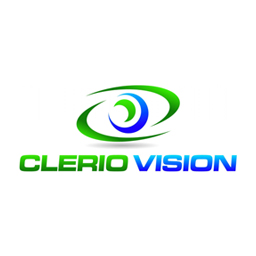Leveraging technology developed at the University of Rochester that was recently recognized with a Nobel Prize, Clerio Vision, Inc. is commercializing LIRIC—a novel, noninvasive method to correct human vision. The core technology has been in development for more than 15 years and has now entered clinical trials.
“We are excited to announce that we have now treated the first five partially-sighted subjects in our First-in-Human study,” stated J. Mikael Totterman, CEO of Clerio Vision. The purpose of this study is to confirm safety as well as demonstrate the ability to correct the optics of the eye in a nonsurgical fashion.
The procedure is based on ultrafast laser technology which was originally developed at the University of Rochester by Gerard Mourou, PhD, and Donna Strickland, PhD, who recently received the 2018 Nobel Prize in Physics. Capitalizing on the ultrafast techniques, Wayne Knox, PhD, an early colleague of Dr. Mourou, refined the novel femtosecond techniques for noninvasive ophthalmic applications. In extensive preclinical studies, these femtosecond lasers were optimized to change the refractive index of corneal tissue. The refractive index modifications can be used to correct nearsightedness, farsightedness, astigmatism and even presbyopia. Presbyopia is the age-related, degradation of vision that occurs for most people between the ages of 40 and 50 years.
More than 200 million people in the United States and more than 2 billion people worldwide require some form of vision correction. Globally, only about 28 million or about 1.4% of people have chosen LASIK, a form of laser vision correction. The most common obstacle to a greater adoption of laser vision correction is the fear on the part of the patients regarding the surgical nature of the current LASIK procedures despite its proven efficacy.
“In addition to being able to offer a noninvasive vision correction alternative to patients concerned about surgery, we are optimistic that LIRIC may offer an improved safety profile for a procedure that already has excellent outcomes,” stated Scott MacRae, MD, an international leader in LASIK innovation at the University of Rochester’s Flaum Eye Institute. He was the first refractive surgeon to perform the laser induced refractive index change procedure (LIRIC).
Jeffery J. Machat, MD, one of the early pioneers of LASIK and the original cofounder of TLC Laser Eye Centers, also served as a treating refractive surgeon. Dr. Machat noted, “Not since the advent of excimer laser have I been this excited about a new laser vision correction technology. I absolutely believe that the LIRIC procedure can revolutionize ophthalmology and the way we treat prescriptions without any pain or weakening of the eye. It was an honor to be a part of the original team that performed these inaugural procedures and be a part of history.”
Clerio’s first-in-human clinical trial is being conducted at Grupo Oftalmo & Plástico, a highly experienced clinic with First-in-Human studies for next generation ophthalmic products. The full team of refractive surgeons in the First-in-Human study also includes Drs. Gabriel Quesada, Rodrigo Quesada, Kevin Waltz, and John Vukich. Drs. Quesada, Quesada, Waltz, and Vukich lead a complete group in San Salvador, El Salvador providing fully compliant, world-class ophthalmic research services and built a custom made OR within their pre-existing facility to support the requirements of advanced femto clinical research.
In addition to developing LIRIC as a method to correct optical errors directly in human corneas, Clerio is currently conducting clinical trials of new contact lens designs using LIRIC technology as well as further refining the technology for intraocular lens applications.
About Clerio Vision, Inc.
Clerio Vision is developing a revolutionary product platform for the global ophthalmic market, based on technology licensed from the University of Rochester. The company is in the process of developing and commercializing a portfolio of next generation products in contact lenses, refractive as well as cataract surgery. The contact lens and refractive surgery product lines are currently in clinical development. The company has raised approximately $18 million in financing from Stonehenge Growth Equity, Armory Square Ventures, prominent angel investors as well as the National Science Foundation. The team is composed of serial entrepreneurs with multiple exits as well as ophthalmic industry veterans who pioneered a number of new ophthalmic technology categories.
About University of Rochester
The University of Rochester, which includes the University of Rochester Medical Center, is one of the nation’s top-tier research institutions. The Medical Center is home to approximately 3,000 individuals who conduct research across many centers, institutes and labs. Scientists have developed therapies that improve human health across the globe.
Researchers work closely with URVentures, the University of Rochester’s technology transfer group, to develop and license innovations and intellectual property to startups and industry partners. The University of Rochester holds a small equity stake in Clerio Vision and has the potential for a future royalty stream if the technology is commercially successful.
About Grupo Oftalmo & Plástico
Grupo Oftalmo & Plástico is one of the leading eye clinics in Central America, located in San Salvador, El Salvador. The clinic has more than 40 years of experience in the field of ophthalmology and its surgeons are pioneers in novel cataract and refractive surgery procedures. Grupo Oftalmo & Plástico has focused on developing a world-class team dedicated to ophthalmic research.
